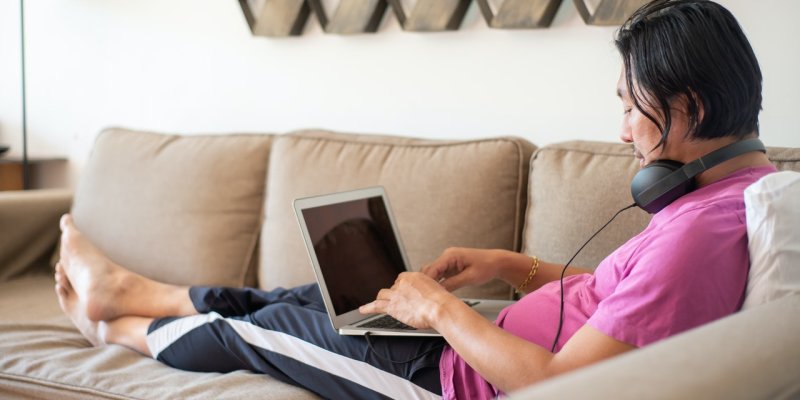
Monitoring a mic sounds like a complicated concept, but it's actually pretty easy to do and explain. Mic monitoring is the process of hearing what you're recording played back into your headphones in real-time.
Mic monitoring is most often used to hear the playback of your voice, but it can be used to take the sound from anything recorded and play it directly in your ears at the exact time it is happening.
It is essential for mic monitors to play back in real-time so that you won't hear delays or a lag between your recorded sound and the actual playback.
Mic monitoring has several benefits that most people know about, and a few that most don't even consider. For example, did you know that mic monitoring can actually help with your health?
Common benefits of mic monitoring include the ability to hear yourself clearly as you talk or sing in a loud environment, checking the technical aspects of your recording quality, and improving team communication.
One hidden benefit is that this feature allows you to avoid the dangers of The Lombard effect, which is the tendency of speakers to increase their vocal work when speaking in a loud setting to make sure that their voice is heard.
This can easily cause vocal fatigue, which brings about a sore throat, loss of voice, scratchiness, and similar symptoms.
Mic monitoring can also help your team members avoid ear damage due to loud levels when people are testing out their sound quality in digital meet-up settings.
Many people are tempted to scream loud or have the volume way too high to the point where everyone on the call with a headset is at risk of some crazy and unnecessarily dangerous volume levels.
Related Post: 5 Ways To Avoid Listener Fatigue
For singing or playing an instrument in a studio recording setting, using a mic monitor setting can help you hear yourself as you record without feeling like the music in your headphones is drowning out your own sound.
Monitors are also used regularly in live performance settings where a singer or rapper on stage needs to hear certain things in their ear (referred to as in-ear monitors) without being drowned out by the loud environment they are performing in.
Related Post: What's The Best Distance From The Mic For Recording?
The term mic monitoring is usually associated with gamers. Most people just refer to it as a monitor setting for other uses.
You can easily use mic monitoring with consoles like Xbox and Playstation when gaming while streaming or playing with other gamers.
For team settings, mic monitoring will help with fast gameplay and good communication without the risk of a player shouting too loud and ruining the flow because they can't hear their own mic quality.
Mic monitoring can come in handy for virtual calls where you need to communicate properly with your team and make your meetings more productive and timely.
A lot of work meeting time is often spent with team members figuring out if their audio levels are right (or simply never knowing at all).
You and your coworkers can save time on the meeting by monitoring your mic levels before the call or during the session while you speak.
It's important to find the right balance between hearing your own voice and the audio playback in your headphones.
Adjust the mic monitoring volume to a level where you can clearly hear yourself without it overpowering other sounds in your ears.
To ensure accurate mic monitoring, use headphones with good noise isolation. This will help reduce any external sounds bleeding into your microphone, providing a cleaner monitoring experience and preventing feedback or echoes.
Some mic monitoring setups may introduce a slight delay between your voice input and the playback in your headphones.
Experiment with different settings to find the optimal delay that feels natural and doesn't disrupt your performance or communication.
If you're using recording or streaming software, check if there is a built-in mic monitoring feature. Enable this feature to have more control over the mic monitoring settings and easily adjust them during your recording or streaming sessions.
Depending on your setup, you may benefit from using external hardware for mic monitoring.
Dedicated audio interfaces or mixers often provide more advanced mic monitoring capabilities, such as individual channel control or customizable EQ settings. Explore these options if you require more precise monitoring control.
So there you have it, folks! Mic monitoring may sound like a complex concept, but it's actually pretty simple and has a lot of benefits.
From avoiding vocal fatigue to improving team communication and ensuring clear sound quality, mic monitoring can come in handy in various settings - whether you're a singer in a studio, a gamer streaming live, or a remote worker attending virtual meetings.
So next time you use a microphone, consider turning on the mic monitoring feature - it might make your life easier and healthier!

As a session singer, writer, and producer that has worked with over 300 clients to provide high-quality jingles, singles, and features, Yona spends her time creating and marketing new music and helpful resources for creators. Check out Yona’s latest releases on her Spotify, her Youtube and share if you like it!
If you are in need of singer, songwriter or song producer services, see what Yona Marie can offer you on her services page.